Kateryna Stepanenko, Grace Mappes, Angelica Evans, Christina Harward, and Frederick W. Kagan
Ukrainian President Volodymyr Zelensky emphasized that the war in Ukraine is not a “stalemate” in a comment to the media about Ukrainian Commander-in-Chief General Valerii Zaluzhnyi’s essay on the positional nature of warfare in Ukraine.[1] Zelensky stated during a joint press conference with European Commission President Ursula von der Leyen on November 4 that the current situation on the frontlines is “not a stalemate” even if “time has passed” and “people are tired.” Zelensky emphasized that Ukraine prioritizes the safety of its servicemen and needs US F-16 fighter aircraft and air defenses to gain an advantage over Russian forces. Zelensky recalled that many observers were quick to call the battlefield situation in 2022 “a stalemate,” but that Ukrainian forces with several “tricks, tactics, [and] military operations” were able to liberate Kharkiv Oblast and west (right) bank Kherson Oblast. Zelensky added that Russian President Vladimir Putin will not stop at Russia’s currently occupied lines and noted that Ukraine “has no right to even think about giving up.” Zelensky’s statements largely mirror the main arguments in Zaluzhnyi’s essay entitled, “Modern Positional Warfare and How to Win It.”
Zaluzhny’s long essay, “Modern Positional Warfare and How to Win It,” outlines Zaluzhnyi’s consideration of the changes Ukraine must make to overcome the current “positional” stage of the war more clearly than the shorter op-ed and the Economist article it accompanied. Zaluzhnyi wrote that the war “is gradually moving to a positional form” and noted that Ukraine needs to gain air superiority; breach mine barriers in depth; increase the effectiveness of counter-battery; create and train the necessary reserves; and build up electronic warfare (EW) capabilities to overcome positional warfare.[2] Positional warfare refers to military operations that do not result in rapid or dramatic changes to the frontline despite both sides‘ continuing efforts to improve their positions. Zaluzhnyi notably did not say that the war was stalemated in his essay or suggest that Ukraine could not succeed. His essay focused, rather, on explaining that the current positional character of the war was a result of technological-tactical parity on the battlefield and the widespread use of mine barriers by Russian and Ukrainian troops. Zaluzhnyi considered the opportunities presented to Ukraine by Russia’s challenges, including the significant losses suffered by Russian aviation; Ukrainian use of Western missile and artillery weapons; and Russia’s failure to take advantage of its human mobilization resources due to political, organizational, and motivational issues. Zaluzhnyi argued that to avoid World War I-style “trench war” and move to maneuver warfare, Ukraine must develop new approaches including technological and other changes, some of which depend on Western support and others require adaptations within the Ukrainian military, state, and society. Zaluzhnyi concluded that positional warfare benefits Russia as it prolongs the war and could allow Russia to achieve superiority in certain areas. Zaluzhnyi argued that Ukraine or Russia could return to rapid maneuver warfare under the right circumstances, which for Ukraine must include Western-provided military resources. Zaluzhnyi’s essay was all about how to restore maneuver to a positional war, not an argument that the war has reached a stalemate.
Zelensky also denied Western reports that US and European officials are pressuring Ukrainian officials to discuss the possibility of peace negotiations. NBC, citing current and former US officials, reported on November 3 that US and European officials have been “quietly” discussing the prospects of peace negotiations with Ukrainian officials.[3] NBC’s sources stated that these discussions took place during a meeting of the Ukraine Defense Contact Group in the past month and were the result of Ukrainian acknowledgment of Western concerns that the war has reached a “stalemate.” Zelensky stated during the press conference on November 4 that, as the leader of Ukraine, he can attest that no one in Europe or the United States is pressuring him to discuss peace negotiations.[4] Von der Leyen also expressed her support for Ukraine’s sovereignty.
NBC added that US officials have no indication that Russian President Vladimir Putin is willing to negotiate with Ukraine or doubts that Russia can continue its war until Western aid for Ukraine falters.[5] ISW has also not observed any indications that Russia is prepared to enter peace negotiations with Ukraine in good faith. Kremlin spokesperson Dmitry Peskov expressed the Kremlin’s disagreement with the characterization of the war in Ukraine as a “stalemate” on November 2, stating that the war in Ukraine “has not reached a dead end” and that the Russian military continues to conduct offensive operations.[6] Russia’s offensive operations around Avdiivka indicate that the Kremin continues to believe that it is possible to achieve its objectives with military force and is unlikely to enter peace negotiations with Ukraine, except to buy time to reconstitute for future offensive operations. Pressure on Ukraine to negotiate an end to the war will likely remain meaningless if not harmful as long as Putin believes that he can achieve his objectives on the battlefield.
The Russian Ministry of Defense (MoD) allegedly used claims that the Syrian government agreed to supply weapons to Iranian-backed Lebanese Hezbollah to subsume remnants of the Wagner Group in Syria and seize their air defense systems. A Kremlin-affiliated milblogger claimed on November 4 that Israel communicated information via diplomatic channels to Russia a few weeks ago about Syrian President Bashar al-Assad’s alleged agreement to supply Iranian-backed Lebanese Hezbollah with weapons.[7] The milblogger claimed that remnants of the Wagner Group were operating in Syria under an agreement with the Syrian government and that the Russian MoD used this alleged information to pressure the Syrian government to allow the Russian MoD to force Wagner fighters in Syria to transfer their weapons to and sign contracts with the Russian MoD. The milblogger claimed that the Russian MoD seized a Pantsir-S1 air defense system from Wagner personnel near Palmyra, Syria. CNN previously reported that Assad agreed to provide the Russian air defense systems to Hezbollah and tasked Wagner with their delivery.[8] The milblogger did not specify whether the allegations about Assad’s agreement with Hezbollah were true and instead claimed that the truth of that matter is not as important as the fact that the Russian MoD used it as a pretext to make demands of Wagner. The Russian MoD has consistently pursued efforts to subsume Wagner operations abroad recently and is likely concerned about air defense systems in Wagner’s possession because Wagner forces used air defense systems to shoot down multiple Russian aircraft during the June 24 rebellion.[9]
Russian forces conducted a series of missile and drone strikes against Ukraine on November 3 and 4. The Ukrainian General Staff reported that Ukrainian air defenses downed two Shahed-131/136 drones targeting Sumy Oblast on the night of November 3 to 4 and three Iskander-K cruise missiles targeting Dnipropetrovsk and Poltava oblasts on the evening of November 4.[10] The Russian MoD claimed that Russian forces struck a Ukrainian weapons and ammunition arsenal in Pryluky, Chernihiv Oblast.[11] Russian milbloggers claimed that Russian forces also targeted Ukrainian rear areas, including the Kanatove airfield, Kirovohrad Oblast; Myrhorod, Poltava Oblast; Kharkiv City, Kharkiv Oblast; Dnipro City, Dnipropetrovsk Oblast; Ivano-Frankivsk Oblast; Odesa Oblast; and Lviv Oblast.[12]
Ukrainian forces continued offensive operations near Bakhmut and in western Zaporizhia Oblast on November 4. The Ukrainian General Staff reported that Ukrainian forces continued offensive operations in the Melitopol (western Zaporizhia Oblast) and Bakhmut directions.[13] Russian milbloggers claimed that Ukrainian forces advanced along the forest line north of Klishchiivka (7km southwest of Bakhmut) and are gaining a foothold in the area.[14]
English-language Russian outlet the Moscow Times reported that the Russian government dismissed TASS General Director Sergei Mikhailov on July 5 due to TASS’s failure to align with Kremlin narratives while reporting on the Wagner Group rebellion. The Moscow Times cited anonymous Russian government officials, including from the presidential administration and the State Duma, as stating that the Kremlin dismissed Mikhailov because TASS’s coverage of the Wagner rebellion did not paint Russian authorities in a favorable light and did not include enough pro-Kremlin coverage.[15] Russian government officials stated that Mikhailov was fired because “TASS covered [the Wagner rebellion] in too much detail and promptly” and that “they [TASS employees] had forgotten that their main task is not to report the news [but] to create an ideologically correct narrative for the Kremlin.” A source admitted that the news outlet’s “neutrality” is useless with the war in Ukraine ongoing and the upcoming Russian presidential elections, which Putin “must win on record.” A TASS source stated that Mikhailov adhered to the “basic rules of journalism” and claimed that Russian state media outlet RIA Novosti, in contrast, is similar to a tabloid. ISW previously assessed that Mikhailov had rebranded TASS into a modern publication since his appointment in 2012 and that his dismissal may indicate that the Kremlin was unhappy with the media coverage of the Wagner rebellion and highlighted the continued importance of loyalty to Putin over professional achievement.[16] Putin previously awarded Mikhailov the Order of Friendship in 2021 for his professional successes and “many years of conscientious work.”[17]
The Russian government is testing an electronic voting system ahead of the 2024 presidential elections, likely to further support efforts to manipulate the results in favor of Russian President Vladimir Putin. Russian opposition outlet Meduza reported on November 4 that the Russian government services portal Gosuslugi sent letters inviting Russian citizens, including Meduza employees, to test the remote electronic system on November 15-17. The letters also stated that all adult Russian citizens are eligible to participate in the test.[18] The Russian government officially announced the tests on October 31, and Meduza reported that a government source stated that the Russian government intends to have as many Russian federal subjects utilize electronic voting as possible in the presidential election.[19] These public election preparations are notable as Putin has not announced his official campaign and Russian state media has not yet begun posturing Putin as the only viable candidate.
Key Takeaways:
- Ukrainian President Volodymyr Zelensky emphasized that the war in Ukraine is not a “stalemate” in a comment to the media about Ukrainian Commander-in-Chief General Valerii Zaluzhnyi’s essay on the positional nature of warfare in Ukraine.
- Zaluzhny’s long essay, “Modern Positional Warfare and How to Win It,” outlines Zaluzhnyi’s consideration of the changes Ukraine must make to overcome the current “positional” stage of the war more clearly than the shorter op-ed and Economist article it accompanied.
- Zelensky also denied Western reports that US and European officials are pressuring Ukrainian officials to discuss the possibility of peace negotiations.
- NBC added that US officials have no indication that Russian President Vladimir Putin is willing to negotiate with Ukraine or doubts that Russia can continue its war until Western aid for Ukraine falters.
- The Russian Ministry of Defense (MoD) allegedly used claims that the Syrian government agreed to supply weapons to Iranian-backed Lebanese Hezbollah to subsume remnants of the Wagner Group in Syria and seize their air defense systems.
- Russian forces conducted a series of missile and drone strikes against Ukraine on November 3 and 4.
- Ukrainian forces continued offensive operations near Bakhmut and in western Zaporizhia Oblast on November 4.
- English-language Russian outlet the Moscow Times reported that the Russian government dismissed TASS General Director Sergei Mikhailov on July 5 due to TASS’s failure to align with Kremlin narratives while reporting on the Wagner Group rebellion.
- The Russian government is testing an electronic voting system ahead of the 2024 presidential elections, likely to further support efforts to manipulate the results in favor of Russian President Vladimir Putin.
- Russian forces continued offensive operations along the Kupyansk-Svatove-Kreminna line, north and south of Bakhmut, around Avdiivka, west and southwest of Donetsk City, near Vuhledar, in the Donetsk-Zaporizhia Oblast border area, and in eastern and western Zaporizhia Oblast, and advanced in various sectors of the front.
- The BBC and Russian opposition media outlet Mediazona confirmed that at least 35,780 Russian servicemen have died in the war in Ukraine since February 24, 2022, as of November 3, 2023, including 923 deaths in the past two weeks.
- Russian authorities continue efforts to settle Russian citizens in occupied Ukraine.
We do not report in detail on Russian war crimes because these activities are well-covered in Western media and do not directly affect the military operations we are assessing and forecasting. We will continue to evaluate and report on the effects of these criminal activities on the Ukrainian military and the Ukrainian population and specifically on combat in Ukrainian urban areas. We utterly condemn Russian violations of the laws of armed conflict and the Geneva Conventions and crimes against humanity even though we do not describe them in these reports.
- Russian Main Effort – Eastern Ukraine (comprised of two subordinate main efforts)
- Russian Subordinate Main Effort #1 – Capture the remainder of Luhansk Oblast and push westward into eastern Kharkiv Oblast and encircle northern Donetsk Oblast
- Russian Subordinate Main Effort #2 – Capture the entirety of Donetsk Oblast
- Russian Supporting Effort – Southern Axis
- Russian Mobilization and Force Generation Efforts
- Activities in Russian-occupied areas
- Russian Information Operations and Narratives
Russian Main Effort – Eastern Ukraine
Russian Subordinate Main Effort #1 – Luhansk Oblast (Russian objective: Capture the remainder of Luhansk Oblast and push westward into eastern Kharkiv Oblast and northern Donetsk Oblast)
Russian forces continued offensive operations along the Kupyansk-Svatove-Kreminna line on November 4 but did not make any claimed or confirmed advances. The Ukrainian General Staff reported that Russian forces unsuccessfully attacked near Synkivka (9km northeast of Kupyansk) and Ivanivka (21km southeast of Kupyansk) in Kharkiv Oblast, Stelmakhivka (15km northwest of Svatove) and Bilohorivka (10km south of Kreminna) in Luhansk Oblast, and Verkhnokamianske (18km south of Kreminna) in Donetsk Oblast.[20] Ukrainian Ground Forces Commander Colonel General Oleksandr Syrskyi stated that elements of the Russian 6th Combined Arms Army (Western Military District [WMD]) and 1st Guards Tank Army (WMD) continued offensive operations near the Kupyansk forest area, Pershotravneve (24km east of Kupyansk), and Orlyanka (22km east of Kupyansk) and intensified efforts to capture Synkivka and create favorable conditions to capture Kupyansk.[21] Syrskyi stated that Russian forces have suffered significant losses along the Kupyansk Vuzlovyi-Yahidne line (up to 22km southeast of Kupyansk) and are currently regrouping in the area. A Russian milblogger claimed that Russian forces transferred additional manpower to the Kupyansk-Kreminna direction.[22]
Russian sources claimed that Ukrainian forces conducted unsuccessful attacks along the Kupyansk-Svatove-Kreminna line on November 4. The Russian MoD claimed that elements of the Russian Western Grouping of Forces repelled Ukrainian attacks near Synkivka and north of Tymkivka (18km east of Kupyansk) and that elements of the Russian Central Grouping of Forces repelled Ukrainian attacks near Novoselivske (16km northwest of Svatove) and Hryhorivka (11km south of Kreminna).[23]
Russian Subordinate Main Effort #2 – Donetsk Oblast (Russian objective: Capture the entirety of Donetsk Oblast, the claimed territory of Russia’s proxies in Donbas)
Ukrainian forces reportedly advanced on Bakhmut’s southern flank on November 4. Russian milbloggers claimed that Ukrainian forces advanced along the forest line north of Klishchiivka (7km southwest of Bakhmut) and are gaining a foothold in the area.[24]
Russian forces continued to attack north and south of Bakhmut on November 4 but did not make any claimed or confirmed advances. The Ukrainian General Staff reported that Russian forces unsuccessfully attempted to regain lost positions near Klishchiivka and Andriivka (10km southwest of Bakhmut) and launched failed assaults near Bohdanivka (5km northwest of Bakhmut) and Khromove (directly west of Bakhmut).[25] A Russian milblogger claimed that Russian forces launched a ground attack near the Berkhivka reservoir (just north of Bakhmut) but did not advance.[26] Russian milbloggers indicated that elements of the Russian 200th Motorized Rifle Brigade (14th Army Corps, Northern Fleet) are operating on Bakhmut’s northern flank and claimed that elements of the Russian “Viking” Spetsnaz detachment are fighting in the Bakhmut direction.[27]
Russian forces continued offensive operations around Avdiivka on November 4 and made confirmed advances. Geolocated footage published on November 3 and November 4 shows that Russian forces marginally advanced towards the railway southeast of Stepove (8km northwest of Avdiivka) and advanced west of Krasnohorivka (9km north of Avdiivka).[28] Russian milbloggers claimed that Russian forces advanced and consolidated new positions along the railway tracks near Stepove, and one milblogger claimed that Russian forces controlled the railway section near Stepove.[29] A Russian milblogger also claimed that Russian forces are strengthening their positions behind the railway tracks north of Avdiivka.[30] A Kremlin-affiliated milblogger claimed that Russian forces launched assaults from the direction of Spartak (4km south of Avdiivka) and attacked near Stepove and Novokalynove (7km north of Avdiivka).[31] Another Kremlin-affiliated milblogger claimed that Russian forces are attacking in the direction of Sieverne (6km west of Avdiivka) and that heavy fighting is ongoing near the “Tsarska Okhota” restaurant immediately south of Avdiivka.[32] The Ukrainian General Staff reported that Russian forces launched unsuccessful attacks near Stepove, Tonenke (7km northwest of Avdiivka), Avdiivka, Sieverne, and Pervomaiske (11km southwest of Avdiivka).[33]
Ukrainian forces are reportedly counterattacking against Russian advances in the Avdiivka direction as of November 4. A Russian milblogger claimed that Ukrainian forces counterattacked against Russian advances near the railway north of Avdiivka.[34]
Russian sources continued to claim that Russian forces were digging tunnels to destroy Ukrainian positions and launch surprise attacks in the Avdiivka direction. A Russian milblogger claimed that Russian forces dug a tunnel to a Ukrainian position and mined it, destroying the Ukrainian position.[35] Russian milbloggers claimed that elements of the Russian “Dikiya Divisiya” irregular armed formation, which is partially staffed with former Wagner Group personnel, dug a 160-meter-long tunnel and used it to detonate explosives under an unspecified Ukrainian position near Avdiivka.[36]
Russian forces reportedly lost around 200 armored vehicles while conducting offensive operations in the Avdiivka direction over the past three weeks. The UK Ministry of Defense (MoD) assessed that Russian forces have likely lost around 200 armored vehicles around Avdiivka, likely due to the effectiveness of Ukrainian modern hand-held anti-armor weapons, mines, UAV-dropped munitions, and precision artillery systems.[37] The UK MoD assessed that Russian forces have likely switched their tactics to conducting dismounted infantry-based assaults due to vehicle losses in the area. The Ukrainian General Staff published video footage on November 4 showing Ukrainian forces striking a column of Russian armored vehicles moving in a line along a road in the Avdiivka direction.[38]
Russian forces continued offensive operations west and southwest of Donetsk City and near Vuhledar on November 4 but did not make any claimed or confirmed advances. The Ukrainian General Staff reported that Ukrainian forces repelled Russian assaults near Marinka (just west of Donetsk City) and Novomykhailivka (10km south of Marinka).[39] A Russian milblogger claimed that Russian forces unsuccessfully attacked Ukrainian positions from the Mykilske direction (4km southeast of Vuhledar).[40]
Russian Supporting Effort – Southern Axis (Russian objective: Maintain frontline positions and secure rear areas against Ukrainian strikes)
Ukrainian forces did not conduct any confirmed or claimed ground attacks in the Donetsk-Zaporizhia Oblast border area on November 4.
Russian forces conducted offensive operations in the Donetsk-Zaporizhia Oblast border area but did not make any confirmed gains on November 4. The Ukrainian General Staff reported that Ukrainian forces repelled Russian attacks near Staromayorske (9km south of Velyka Novosilka).[41] Russian milbloggers claimed that Russian forces advanced near Pryyutne (14km southwest of Velyka Novosilka) and along the Rivnopil-Staromayorske (10km southwest to 9km south of Velyka Novosilka) line.[42] Ukrainian military observer Kostyantyn Mashovets stated on November 4 that Russian forces conducted a series of unsuccessful counterattacks along the Novodonetske-Zolota Nyva (12km southeast of Velyka Novosilka) line and from the Pryyutne-Zavitne Bazhannya (14km southwest to 13km south) line towards Rivnopil in the past several days.[43]
Russian and Ukrainian forces reportedly skirmished in eastern Zaporizhia Oblast on November 4, and Russian forces recently made confirmed territorial gains. Geolocated footage published on November 3 shows that Russian forces marginally advanced south of Chervone (6km southeast of Hulyaipole).[44] The Russian MoD claimed that Russian forces repelled a Ukrainian ground attack near Marfopil (5km southeast of Hulyaipole).[45]
Ukrainian forces continued offensive operations in western Zaporizhia Oblast on November 4 but did not make confirmed gains. Russian milbloggers claimed that Ukrainian forces continued small-group assaults near Robotyne (10km south of Orikhiv) and Verbove (18km southeast of Orikhiv) on November 3 and 4.[46] A Russian milblogger claimed on November 3 that some positions in forest areas west of Robotyne have changed control several times in the past week.[47]
Russian forces continued limited offensive operations in western Zaporizhia Oblast on November 4 and did not make any confirmed or claimed advances. The Ukrainian General Staff reported that Ukrainian forces repelled a Russian ground attack near Robotyne.[48] Mashovets stated that two battalions of the Russian 2nd Motorized Rifle Brigade and 291st Motorized Rifle Regiment (both of the 42nd Motorized Rifle Division, 58th Combined Arms Army, Southern Military District) conducted a tactical rotation near Robotyne to restore combat power after heavy combat losses.[49]
Russian forces continue to fail to push Ukrainian forces from their positions in the east (left) bank of Kherson Oblast. Russian milbloggers claimed that Russian forces achieved minor success in pushing Ukrainian forces from positions in Krynky but that Ukrainian forces remain in the center of the settlement.[50] The milbloggers also claimed that Ukrainian forces maintain positions near the Antonivsky road and railway bridges.[51] Other Russian milbloggers amplified footage of a Russian infantry squad moving along a road in a condensed formation in Krynky before small arms fire killed and wounded all the personnel, which one milblogger attributed to friendly fire rather than Ukrainian fire.[52] The milbloggers reiterated standard complaints of poor Russian communications between units, lack of counterbattery fire, and poor training of military personnel.[53]
Ukrainian forces continue targeting Russian military assets in rear areas in southern Ukraine. Russian occupation authorities and other Russian sources claimed that Ukrainian forces targeted the Kerch Strait Bridge in occupied Crimea on November 4 but that Russian air defenses intercepted the missiles.[54] Russian sources claimed that missile fragments hit a dry dock in the Zalyv shipyard in Kerch, and geolocated footage shows a fire at the shipyard.[55] A Russian insider source claimed that the Zalyv shipyard contained Project 22800 Karakurt missile ships, which can carry Kalibr cruise missiles, though ISW cannot verify this claim.[56] Zaporizhia Oblast occupation official Vladimir Rogov claimed that Russian forces also shot down three Ukrainian Storm Shadow missiles above Berdyansk on November 4.[57]
Russian Mobilization and Force Generation Efforts (Russian objective: Expand combat power without conducting general mobilization)
The BBC and Russian opposition media outlet Mediazona confirmed that at least 35,780 Russian servicemen have died in the war in Ukraine since February 24, 2022 as of November 3, 2023, including 923 deaths in the past two weeks.[58] The BBC and Mediazona confirmed the deaths through open-source materials, including a Russian death in the Ukrainian strike on Russian dry docks in Sevastopol on September 13, 2023, and the deaths of two Russian majors in the Ukrainian ATACMS strikes on Russian airfields in occupied Berdyansk and Luhansk City on October 17, 2023. The BBC and Mediazona stated that Russian deaths in Bakhmut still exceed those in the latest Russian offensive operations near Avdiivka.
The Russian government will now register prisoners on a “special military registration.” The Russian government invalidated a subsection of the law on military registration that exempted those serving a prison sentence from military registration and created a “special military registration” for prisoners.[59] Russian military registration and enlistment offices located at correctional facilities and pre-trial detention centers will now input, edit, and remove prisoners' information on the “special military registration” without the prisoner’s personal presence at the office. The Russian prisoners subject to special registration will not undergo medical examinations or psychological screenings.
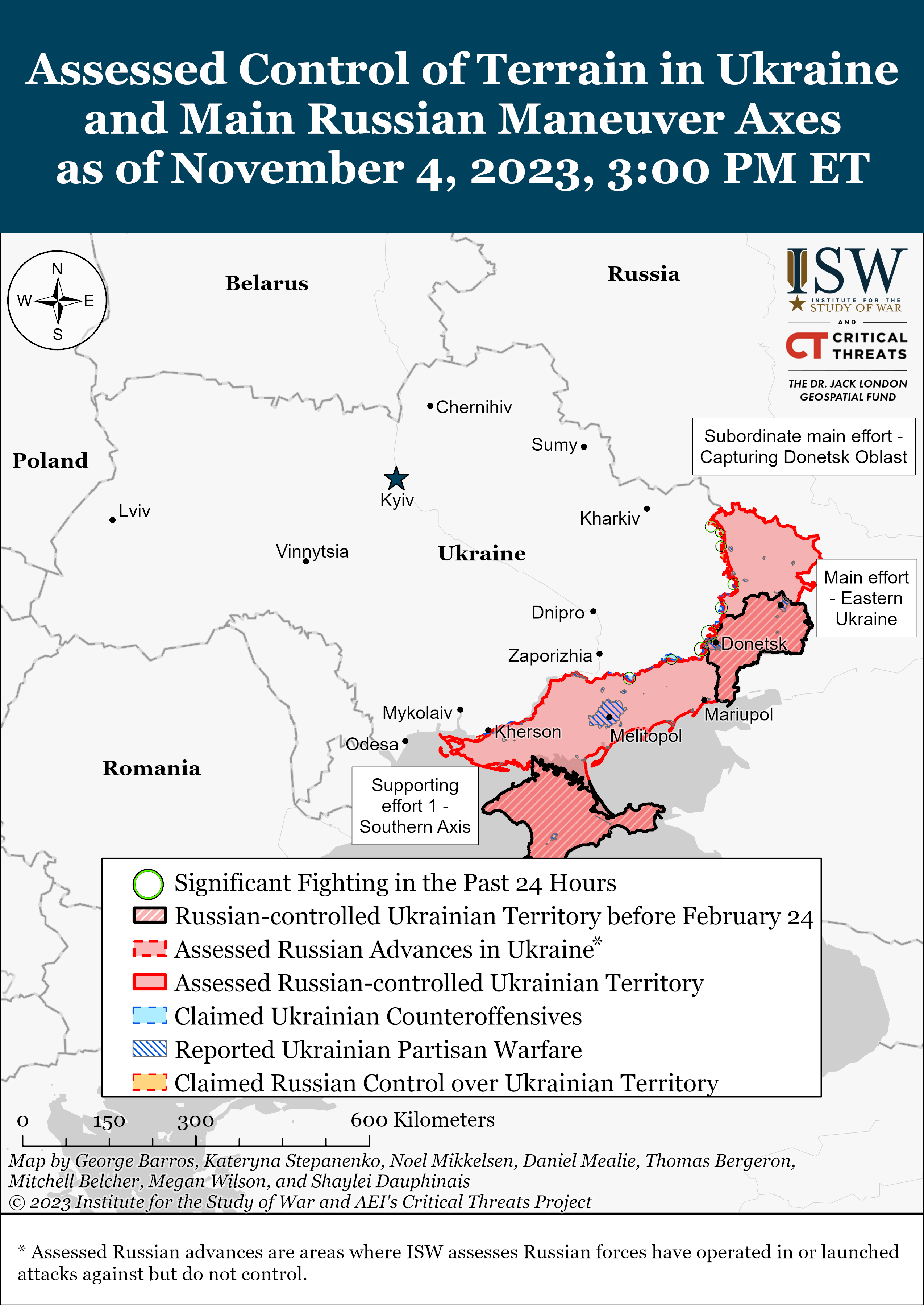
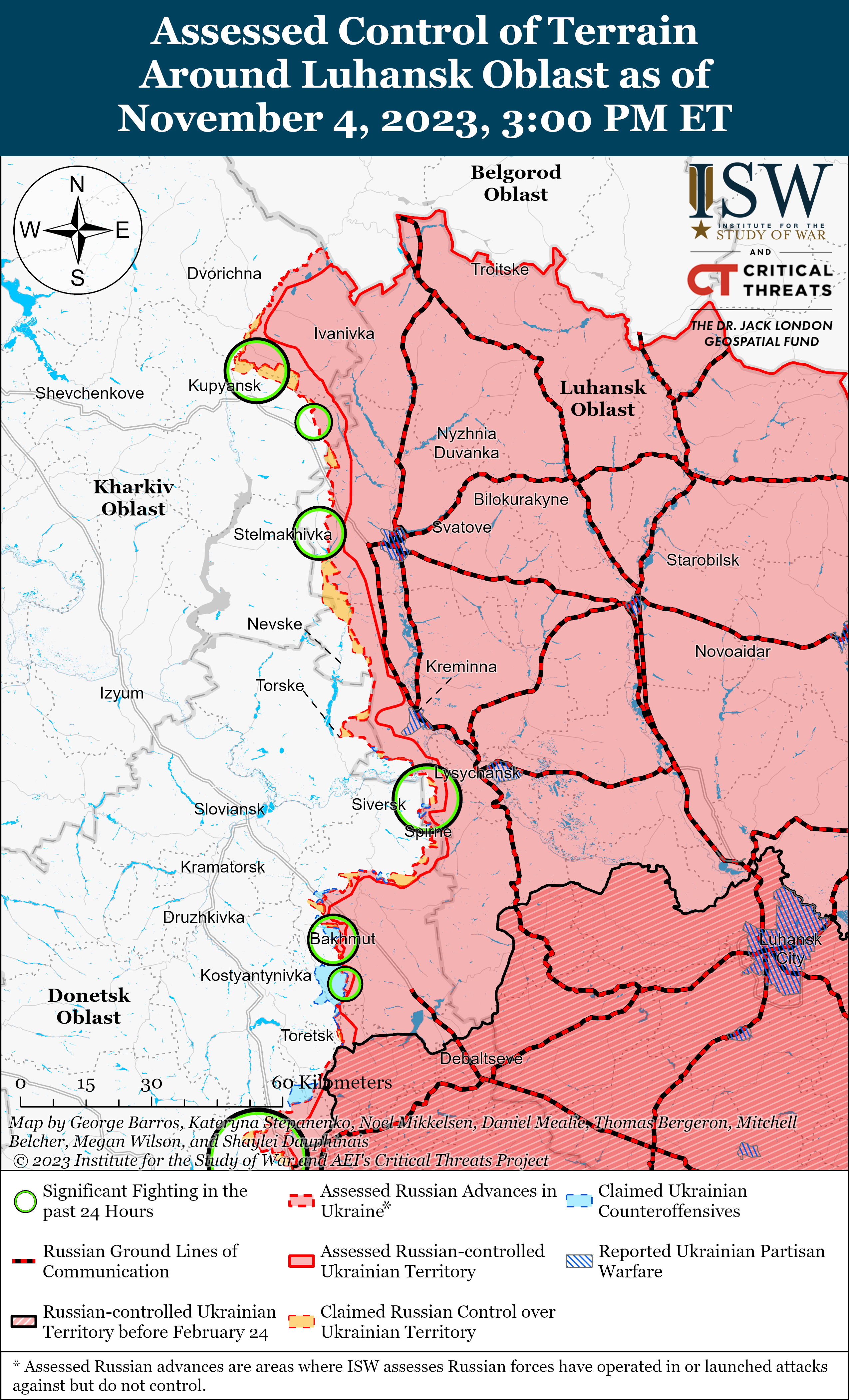
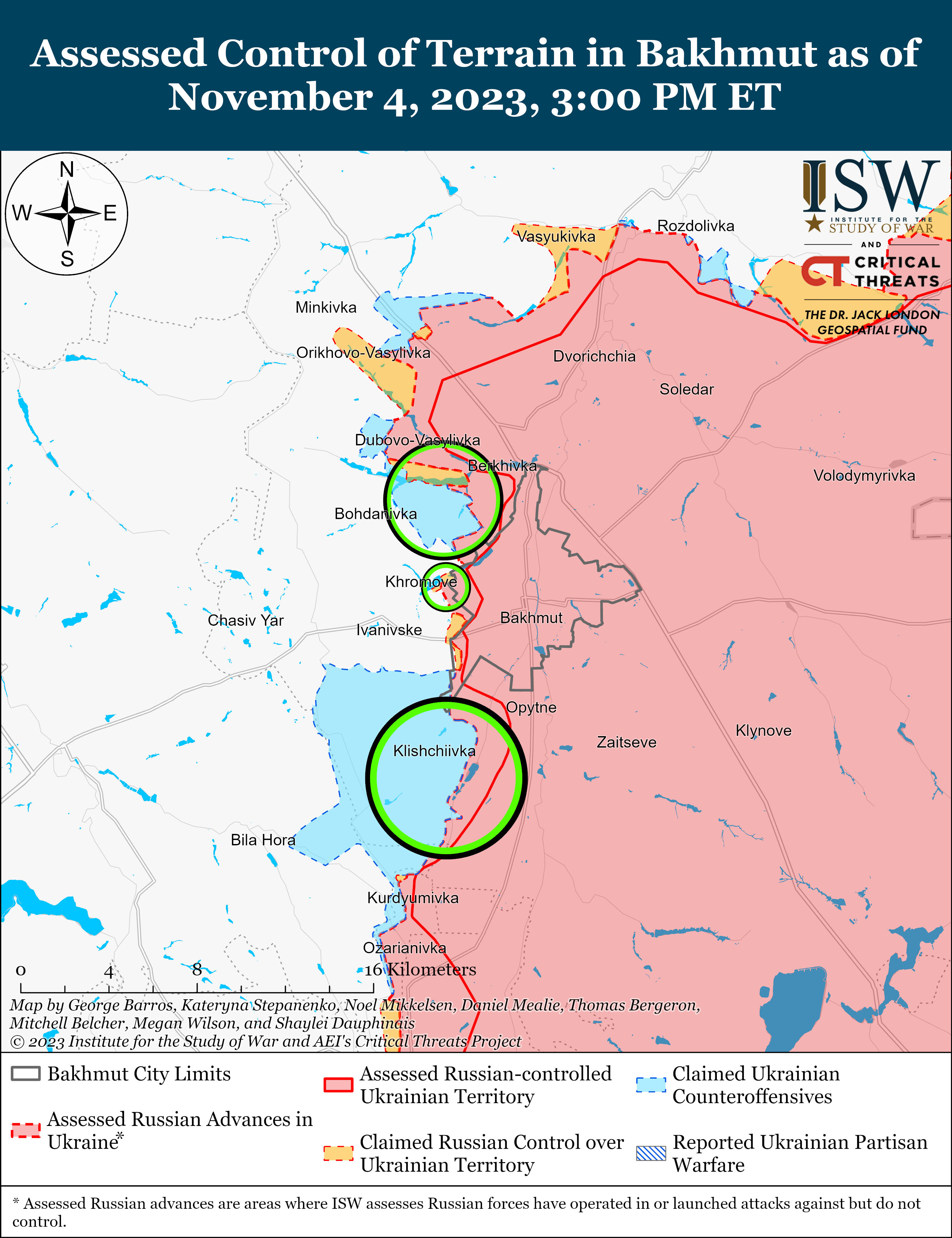
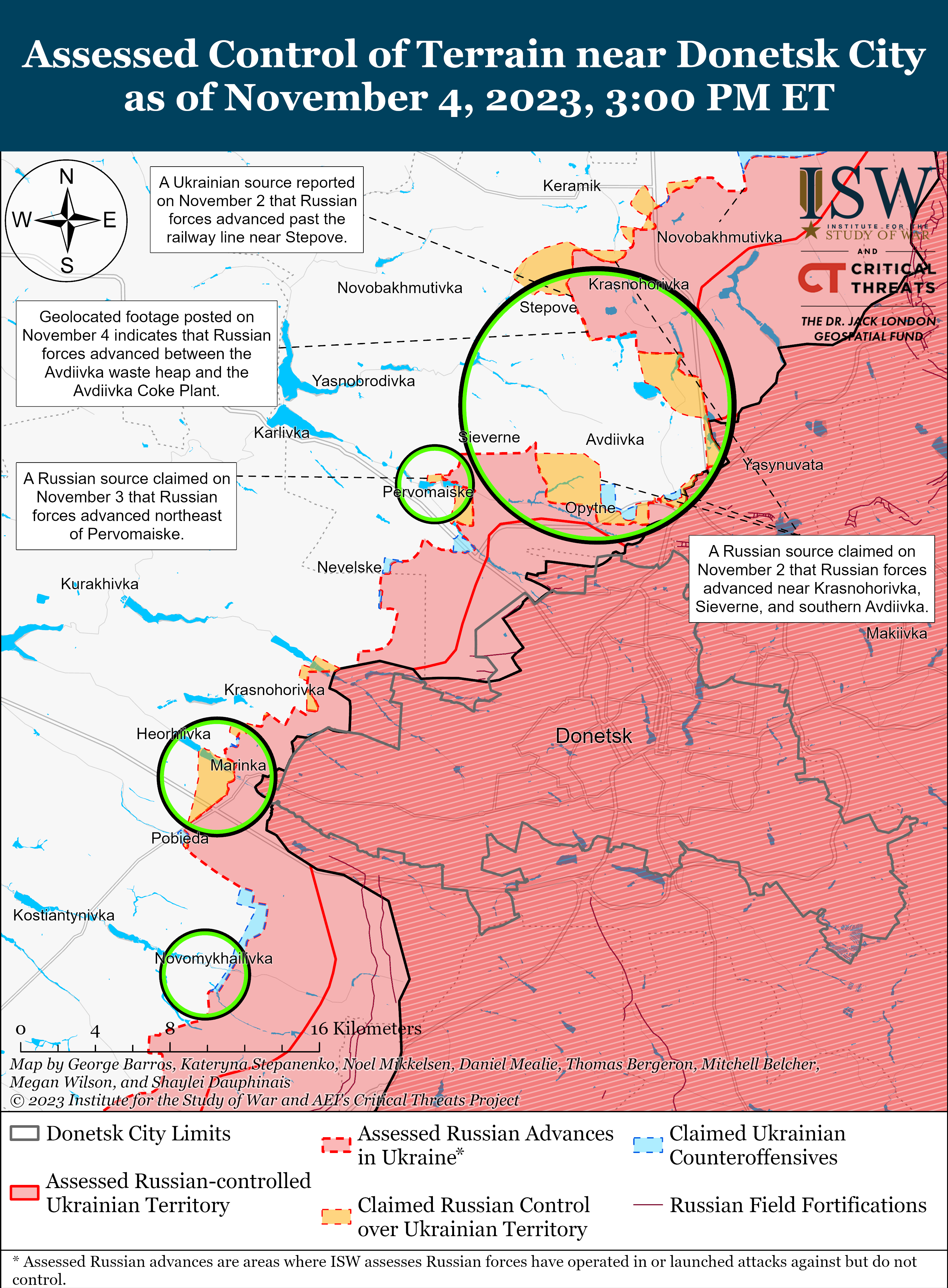
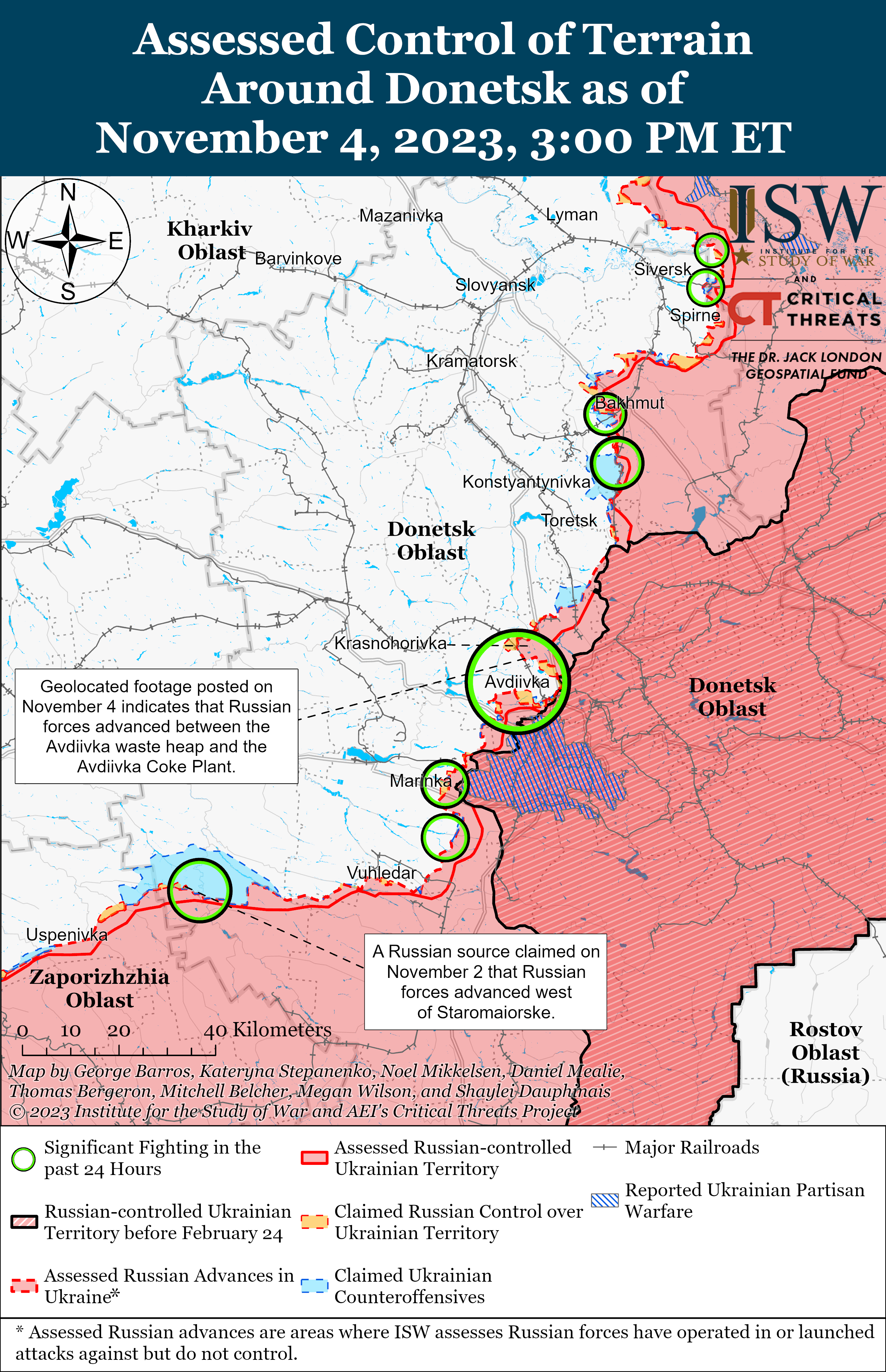
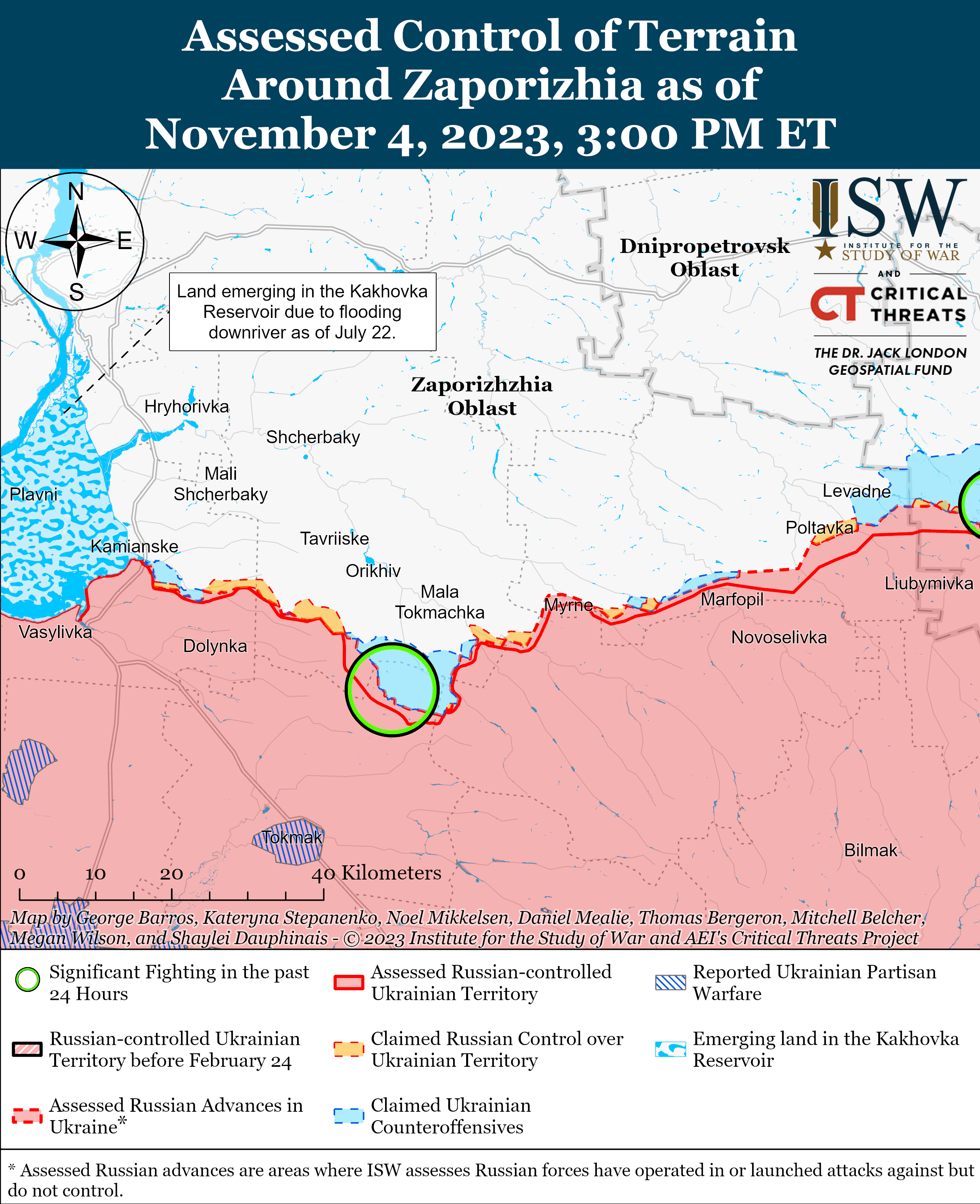
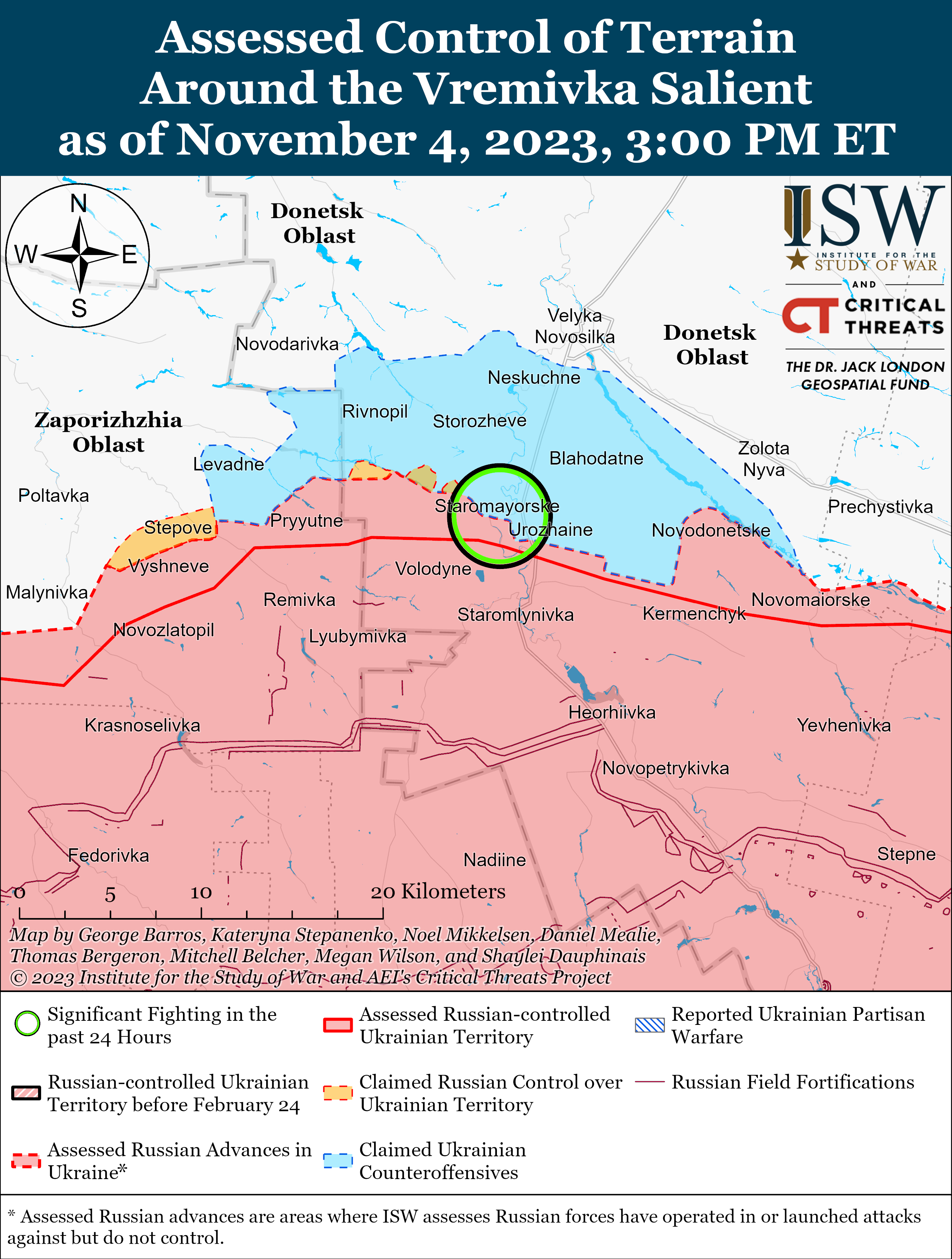
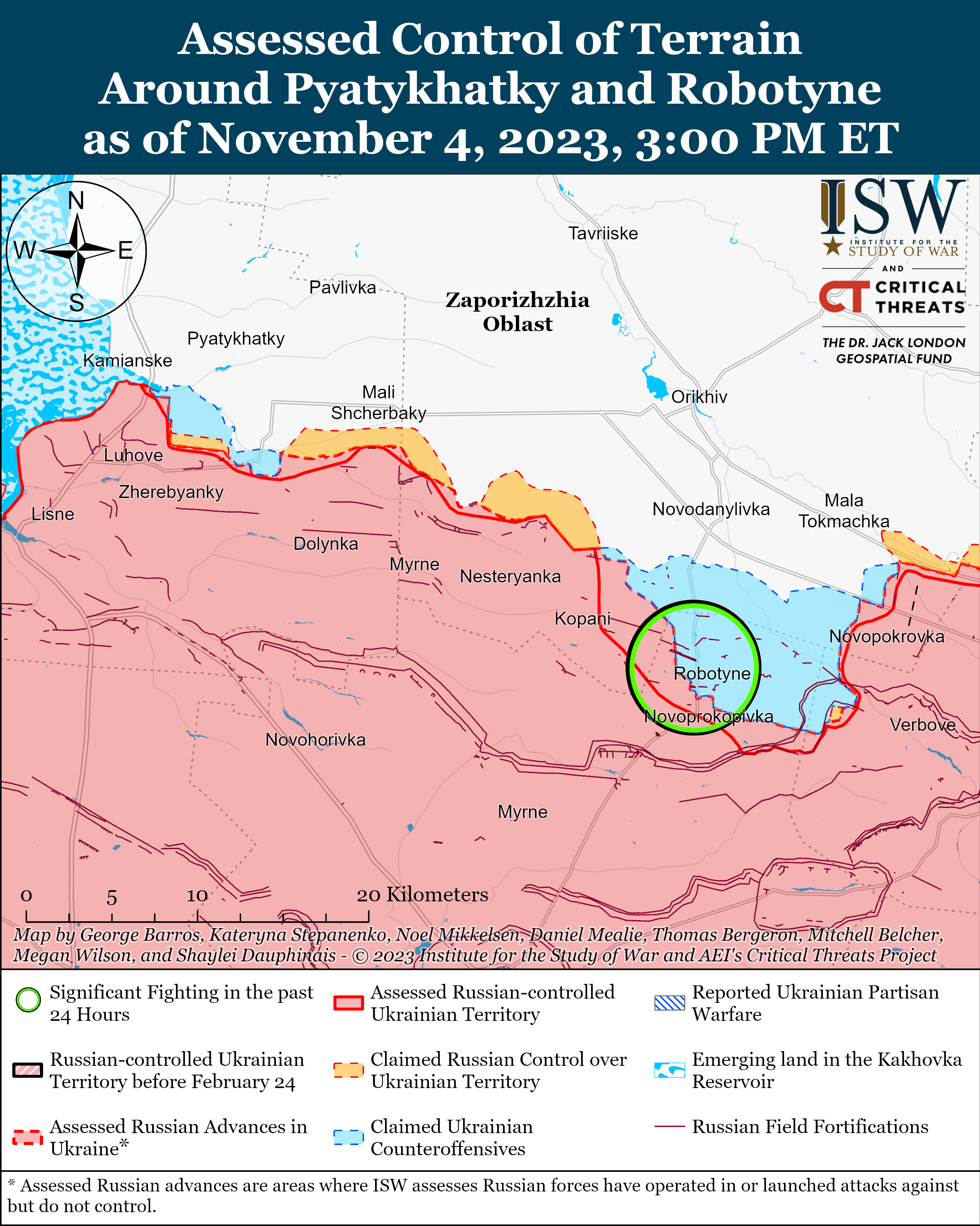
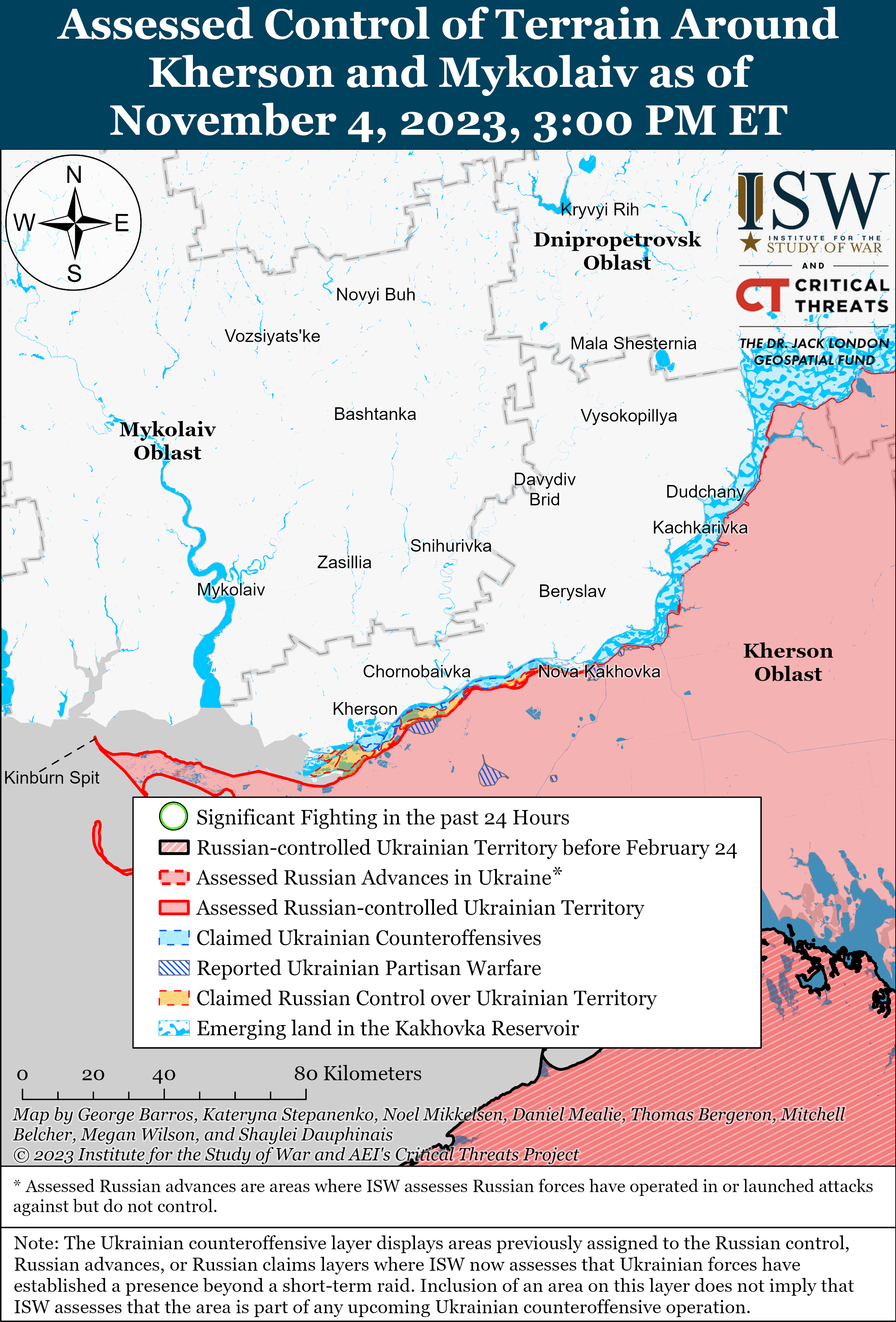
No comments:
Post a Comment